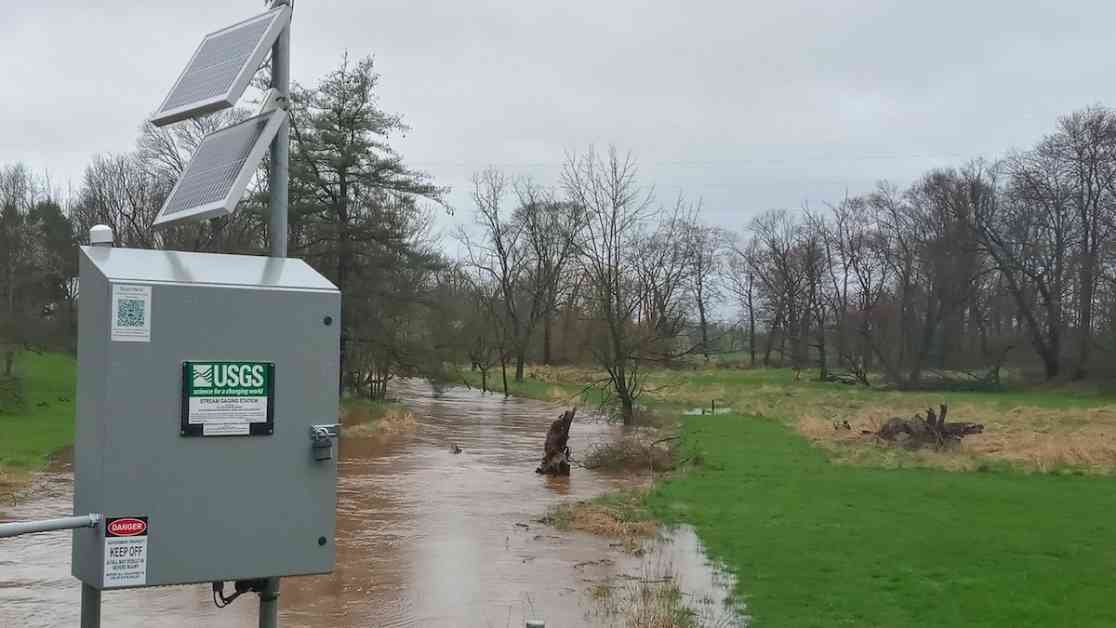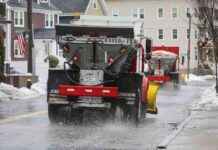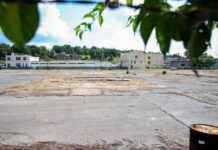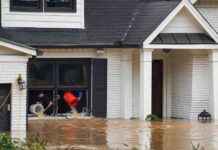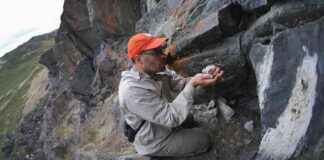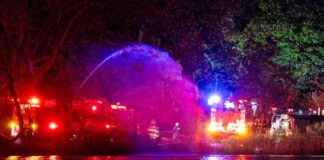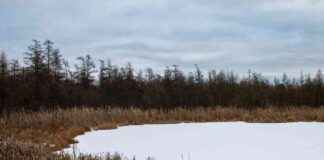Hammer Creek in Lebanon County, Pennsylvania is part of the Chesapeake Bay Small Agricultural Watershed Monitoring Program and the Pennsylvania Water Science Center targeted for closure. Scott Heidel, PADEP / USGS
So, like, these more than two dozen United States Geological Service (USGS) centers that keep an eye on our waters for flooding and drought, as well as manage water supply levels to make sure communities don’t run dry, had their leases terminated by the Trump administration. I mean, what’s up with that?
The 25 centers that are being shut down are part of a network that tracks the quality and levels of surface and ground water. The data these centers provide is crucial for protecting human life and property, maintaining water supplies, and cleaning up oil and chemical spills. Can you imagine what would happen if we didn’t have this data? It would be chaos, dude.
In the wake of a chemical or oil spill, USGS data tracks plumes with real-time monitoring in some locations to protect drinking water. That’s pretty important stuff, if you ask me. But now, with these centers closing, who knows what will happen if there’s another spill?
“There’s no rhyme or reason, no thought at all given to canceling these leases,” said Kyla Bennett, a scientist and attorney who is the science policy director of Public Employees for Environmental Responsibility. “They’re doing it because it’s convenient, because these particular centers happen to be up for renewal.” I mean, that’s just messed up, right?
And get this – there’s no plan to fill the gaps left by the closed USGS centers. It’s like they’re just shutting them down and hoping for the best. “Nobody knows what happens if we’re not doing [monitoring for drought conditions],” said one employee. It’s like they’re playing Russian roulette with our water supply.
One of the most important things these centers do is provide flood warnings throughout the U.S. USGS monitors river levels and shares its data with the National Weather Service. If they shut down, who’s going to warn us about floods? It’s a disaster waiting to happen.
“We’re doing everything we can to make the argument that we need these facilities to complete our mission,” the employee stated. But it’s hard for them to fight back. It’s like they’re being silenced, you know?
One of the centers that’s closing is the one in Charlotte, North Carolina, that helped manage the flooding from Hurricane Helene in Asheville late last year. What are they going to do now if there’s another hurricane? It’s like they’re leaving us high and dry.
The centers also measure water levels of aquifers to make sure industry and utilities aren’t overdrawing them. Without this service, communities could run out of water. It’s like they’re cutting off our lifeline. How are we supposed to survive without water?
Data from the USGS monitoring systems informs the water conservation requirements and drought declarations of states, which trigger withdrawal limits. “Information on the flow of rivers is a vital national asset that safeguards lives, protects property, and ensures adequate water supplies for the future,” USGS said on its website. It’s like they’re just throwing all that away.
“Maybe it’s just me, but I feel like they’re really dropping the ball on this one,” said Candice Hasenyager, Utah Division of Water Resources director. “We don’t really know how they would manage it if that office was closed.” It’s like they’re leaving us in the dark.
Data from the centers is also used to manage pollution discharge permits and safeguard the quality of drinking water. Bennett pointed out that, when there are drought conditions, streams are prone to drying up and discharges must be stopped. It’s like they’re playing with fire, you know?
“You can’t manage what you can’t measure,” said Blake Bingham, deputy state engineer of the Utah Division of Water Rights. It’s like they’re setting us up for failure.
In conclusion, this decision to close the USGS centers is just plain reckless. They’re putting our lives and our water supply in danger. It’s like they don’t even care. And that’s just not cool.

